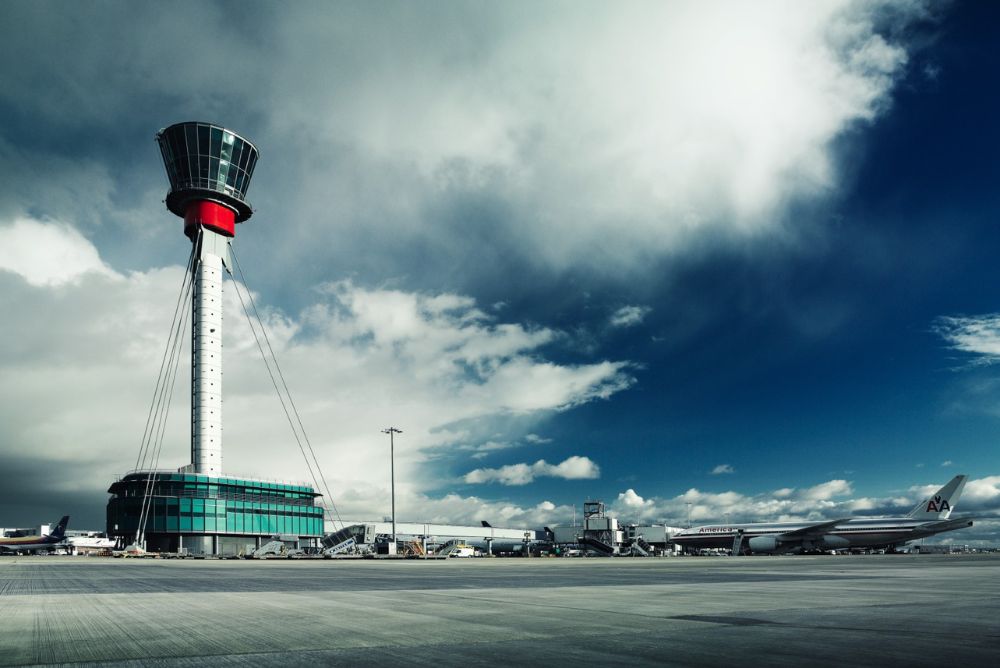June passengers slip, Ebola concerns rise
By Kevin Rozario |

Total revenue passenger kilometres (RPKs) in June rose +4.7% over the same period last year, which was below the +6.2% increase in May 2014 and also below the year-to-date growth of +5.9% (see tables below). But risks are ever-present in the market, particularly the Ebola virus.
Despite the June slippage, the International Air Transport Association (IATA) believes that the reduced rise is still encouraging.
“Earlier signs of a softening in demand are dissipating,” says Tony Tyler (below), IATA’s Director General and CEO, but warns: “While that’s good news there are many risks in the political and economic environment that need careful monitoring.”
He adds: “Risk is today’s reality, whether it’s conflict in the Middle East, sanctions and an impending trade war with Russia, possible default in Argentina or the Ebola outbreak in Western Africa. All have the potential to dent demand. We are optimistic that the industry will still end the year with an improvement in profitability over 2013. But the regional impact of some of these risks will challenge some airlines more than others.
 “One of the biggest regional challenges could be Ebola. Travellers should be reassured that airlines are coordinating closely with the World Health Organization (WHO) and the International Civil Aviation Organization (ICAO).
“One of the biggest regional challenges could be Ebola. Travellers should be reassured that airlines are coordinating closely with the World Health Organization (WHO) and the International Civil Aviation Organization (ICAO).
“WHO currently advises that the risk to travellers is low and is not recommending travel restrictions or border closings. If, however, a passenger feels unwell it is always advised that they seek the advice of a doctor before traveling,” said Tyler.
|
Jun 2014 vs. Jun 2013 |
RPK Growth |
ASK Growth |
PLF |
|
International |
5.5% |
5.7% |
81.4% |
|
Domestic |
3.4% |
3.8% |
81.7% |
|
Total Market |
4.7% |
5.0% |
81.5% |
Source: IATA
|
YTD 2014 vs. YTD 2013 |
RPK Growth |
ASK Growth |
PLF |
|
International |
6.4% |
6.4% |
78.7% |
|
Domestic |
5.1% |
4.3% |
80.3% |
|
Total Market |
5.9% |
5.6% |
79.3% |
Source: IATA
INTERNATIONAL PERSPECTIVE
International passenger demand rose +5.5% in June compared to the same month last year, with airlines in all regions except Africa recording growth.
Middle East carriers had the strongest gains with demand jumping +10.8% in June, reflecting the continued strength of regional economies and solid growth in business-related premium travel. Capacity climbed just 5.9%, propelling load factor up 3.7 percentage points to 82.1%.
European carriers saw demand increase +5.6% in June. This is consistent with steady and continued economic recovery for the region. Capacity rose +5.3% and load factor climbed 0.3 percentage points to 83.8%.
Asia-Pacific carriers’ traffic rose +4.9% but much more capacity was added at +6.7% causing the load factor to slip 1.3 percentage points to 77.9%. The outlook for the region looks broadly positive, with measures of manufacturing activity and export orders pointing to better performance of China says IATA.
North American airlines experienced a +3.1% rise in traffic. Capacity rose +5.9%, however, which caused load factor to fall 2.2 percentage points to 85.1%. However that was still the highest among the regions. Recent data from the US suggest that underlying growth trends in business activity are positive and the unemployment rate is showing improvement.
Latin American airlines’ traffic rose +7.1%. Capacity rose +6.6% and load factor climbed 0.4 percentage points to 79.5%. While growth was solid, it was below the +8.1% annual result in 2013. Part of the softness is due to a significant reduction in capacity this year compared to 2013, as well as sluggishness in major economies.
African airlines saw a -2.7% reduction in demand in June, while capacity climbed 2.0%, resulting in a 3.3 percentage point drop in load factor to 67.3%, the lowest load factor for any region. The weakness could be attributable to adverse economic developments in some parts of the continent, including the slowdown of South Africa.
DOMESTIC PASSENGER MARKETS
Domestic travel demand rose +3.4% in June compared to June 2013, with the strongest growth occurring in Russia and China. Total domestic capacity was up 3.8%, and load factor slid 0.3 percentage points to 81.7% (see chart below).
Russian domestic demand rose +12% in line with government economic policies that support expansion in domestic air travel.
Brazil domestic demand, by contrast, experienced virtually zero demand growth in June compared to June 2013, despite being the host of the FIFA World Cup. Conditions in the Brazilian economy have done little to boost growth in air travel this year, with inflation continuing to rise and consumer confidence on the wane.
|
June 2014 vs June 2013 |
RPK |
ASK |
PLF |
|
Australia |
2.4% |
3.7% |
76.0% |
|
Brazil |
0.2% |
-2.5% |
79.4% |
|
China P.R |
6.6% |
9.7% |
79.2% |
|
India |
4.2% |
7.1% |
73.1% |
|
Japan |
4.1% |
-2.8% |
63.4% |
|
Russian Federation |
12.0% |
10.2% |
80.1% |
|
US |
2.0% |
2.1% |
87.0% |
|
Domestic |
3.4% |
3.8% |
81.7% |
Source: IATA
Alcohol insights: Conversion up, spend down in Q4
Conversion of visitors in the alcohol category in duty free has risen to 54% in Q4 2023,...
Heinemann Asia Pacific makes breakthrough in New Zealand at AKL
Heinemann Asia Pacific is set to enter the New Zealand market with three new retail concepts at...
Men buy and spend more in travel retail says new research by m1nd-set
Men have a higher conversion rate and spend more when shopping in travel retail, says new...
-
 International,
International,Alcohol insights: Conversion up, spend down in Q4
-

-


In the Magazine
TRBusiness Magazine is free to access. Read the latest issue now.

 Trbusiness. The travel retail Trbusiness. The magazine for global retail and duty free professionals.
Trbusiness. The travel retail Trbusiness. The magazine for global retail and duty free professionals.





















